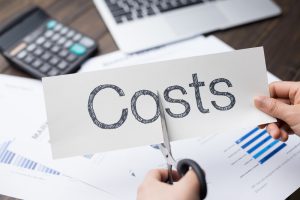Mastering financial forecasting for your business will give you a clear picture of your company’s future. It’s not enough to guess at the numbers. To know where your business is headed, you need to be aware of trends, understand the industry, and use smart strategies. Whether you’re starting a new business or running an existing one, good planning can help you avoid problems and seize opportunities when they arise.
With the right tools and expertise, you can predict future profitability, track costs, and plan for long-term growth. This process also makes you more trustworthy in the eyes of investors, customers, and financial institutions. This article covers the key components of financial forecasting so you can have the confidence to lead your business to success. Are you ready to take control of your finances? Let’s get started.
Understand Financial Forecasting in Business:
Financial forecasting is the process of predicting a company’s future financial position by looking at historical data, market conditions, and plans. It helps business owners look to the future, chart their course, and stay in control in an unpredictable world. Forecasting typically involves estimates of revenue, costs, cash flow, and profit margins. However, forecasting isn’t as simple as plugging numbers into a spreadsheet.
To create truly accurate forecasts, you need to think strategically, plan carefully, and have a deep understanding of market dynamics. When businesses master this skill, they are better equipped to deal with uncertainty, adapt to change, and feel positive about the financial decisions they make. It is the most important part of financial planning and is essential for budgeting, setting goals, and securing financing.
Why Financial Forecasting is Critical to Business Success:
A well-structured financial plan shows where your business is headed and helps you stay on track with your long-term goals. Uncertainty in the absence of a well-structured financial plan often leads businesses to overspend or under-revenue. Financial forecasting assists in monitoring cash flow, optimizing resource utilization, and identifying potential funding problems before they escalate. It can also help you set reasonable sales goals, hire the right talent, and adjust your pricing strategy.
A robust forecast can significantly influence the outcome of a startup pitch to investors. It shows that you have a clear vision and solid facts to back it up. Financial planning is essential for businesses that want to scale, enter new markets, or launch new products. In short, financial planning is not only important, it’s essential for long-term growth and making smart decisions.
How to Create the Right Financial Forecasts:
Getting the right information is the first step to a successful financial plan. First, look beyond financial statements, such as income statements, balance sheets, and cash flow statements. These benchmarks can help you understand trends in revenue, costs, and profit margins. Then, choose a time frame for your forecast. Short-term forecasts (3-12 months) help with business operations, while long-term forecasts (1-5 years) help with long-term planning. Choose a forecasting method, whether it’s qualitative (based on expert advice) or quantitative (based on data analysis).
Next, calculate your profitability by looking at current sales trends, market demand, pricing strategies, and marketing efforts. After you’ve estimated revenue, create a list of fixed and variable costs to calculate expected cash flow and net profit. Finally, ensure your forecast is accurate by checking it against industry best practices and adjusting it regularly based on new information or market changes. The goal is to capture your performance and keep it in sync with your business.
Common Mistakes to Avoid When Forecasting Future Finances:
Even experienced entrepreneurs can make mistakes when forecasting. One of the most common mistakes people make is being overly optimistic and expecting rapid growth without thinking about what could go wrong. While it’s tempting to set ambitious goals, overly optimistic forecasts can damage your reputation and lead to poor decisions. Another mistake is ignoring costs, especially those that are difficult to see or change, such as seasonal staff, maintenance, or shipping costs.
Your results can also be off if you don’t account for inflation or market changes. Some companies use one-time forecasts instead of long-term tools because they don’t keep their forecasts current. Others rely too much on tools without fully understanding how the data goes into them. To avoid these problems, be fact-based, review your forecasts regularly, and combine data-driven analysis with your business acumen.
Conclusion:
Financial planning is not a fixed process that never changes; it changes as your business evolves. Learn how to forecast well, and you can move from guessing at numbers to planning for growth, sustainability, and resilience. It gives you the ability to think ahead, manage risk, and seize opportunities. Whether you’re looking to raise capital or optimize your budget, accurate financial forecasting can help you succeed. Remember, forecasting isn’t perfect, but it’s based on facts and data to make choices that will drive your business forward. Don’t change too much as you grow; start simple and keep going. Forecasting can be difficult, but with the right approach and effort, it can be your business’s best tool.
FAQs:
1. What tools are best for financial forecasting?
Microsoft Excel, QuickBooks, Xero, and more advanced systems such as PlanGuru or Float are all popular tools. Which one you use will depend on the size and complexity of your business.
2. How often should I change my spending plans?
It’s best to review and update financial forecasts monthly or quarterly to reflect changes in the market, business operations, or corporate strategy.
3. Are there differences in the way different companies approach financial forecasting?
Yes, startups rely more on market research and assumptions due to a lack of historical data. Established companies, on the other hand, look at past performance to ensure the accuracy of their forecasts.
4. Can I make forecasts without hiring a financial expert?
Of course you can! Experts are helpful, but small business owners can learn how to make accurate forecasts using online tools, templates, and software.
5. What’s the difference between budgeting and forecasting?
When you budget, you limit your spending based on your goals. When you forecast, you estimate what might happen based on current information and patterns.




